Rhododendron Retrospective
Field Notes II.XXV: On missing flower season and looking back at last year
Welcome to Field Notes!
Summertime. The season has settled in the South as a lethargic heat wave. Rain is an evaporated dream. Sultry air smothers me as I walk out of the door in the pre-dawn dark. The hours of the days grow long. Soil in the fields bakes hard and dusty under the unflinching sun. Withered grasses waver in a hint of a breeze. Cicadas whir in the evening pines. Fireflies circle and dance in the backyard while I let the dog outside one more time before bed. So the days tick by slowly.
I finished The Foothills Trail in early May. Life continues between adventures and I stepped off of the trail into a whirlwind of misfortune. I was looking forward to visiting the Great Smoky Mountains National Park in June for a short photography trip. This is the time of year of the blooming Catawba Rhododendron, Flame Azalea, and Mountain Laurel unique to the Southern Appalachian Mountains. Images of these wildflowers before a backdrop of rolling mountains can easily become portfolio pieces.
There are times when the day-to-day must take priority over adventures. The Fates decided that for me June is one of those times, and I will have to wait another year to see the blooms.
Don’t seek for everything to happen as you wish it would, but rather wish that everything happens as it actually will—then your life will flow well.
-Epictetus
As I am dreaming of the mountains and still planning for the future, I took a look back at some photos from early June of 2023. I had been on a mission to find Catawba Rhododendrons, and I did, in the Shining Rock Wilderness of North Carolina. I wrote about that trip HERE and HERE. However, this was the early days of Field Notes. I wasn’t writing adventure stories yet. At the time I was still sharing most of my photos on social media, with Field Notes serving more as a behind the scenes look.
Today, I would like to offer you some photos from last year. I believe that most of you have not seen them. I remember this trip vividly and these photos will be my inspiration for June in years to come!
I took the following photos from the top of Cold Mountain, a 6030 ft peak. It isn’t a bald, but has some rocky outcroppings at the top that allow for views. The rocks limited where I could stand to see over the shrubbery, and so my choice of compositions were a bit limited as well. Still, I was able to find some interesting angles.
The photo below isn’t the most vivid flower, but shows how excellently the evening light progressed.
This next photo is of Mountain Laurel blooms the following morning. The layout of the mountain top did not allow for a better angle of the sunrise and a breeze prevented me from being able to focus stack images for front to back sharpness.
The next three photos were scenes I encountered on the hike from Cold Mountain to the next day’s camping spot at Ivestor Gap. The mid day light wasn’t ideal, but the overcast skies helped.
Not a flower photo, but the image below is one of my favorites from this trip. A cold rain began in the late afternoon and I waited for a couple of hours in it before a crack in the clouds let the light through.
The next day dawned with heavy fog all around. It made for some nice moody, atmospheric photos.
This last photo is a heartbreaker! I love the image and think it is one of the best forest photo compositions I have taken. BUT! I took this as I was hiking back and didn’t take the time to drop my pack to set up my tripod. I shot it hand held and didn’t bump up the ISO high enough, so my shutter speed was too slow. The image looked good on the back of my camera, but I later discovered that there is camera shake and, looking closely, the rhododendron is slightly blurry. Sigh.
Well, that’s all I have for today. Looking at these photos and remembering the trip a year ago has really made me excited for more adventures. I’ll take them as they come and until then, its one day at a time.







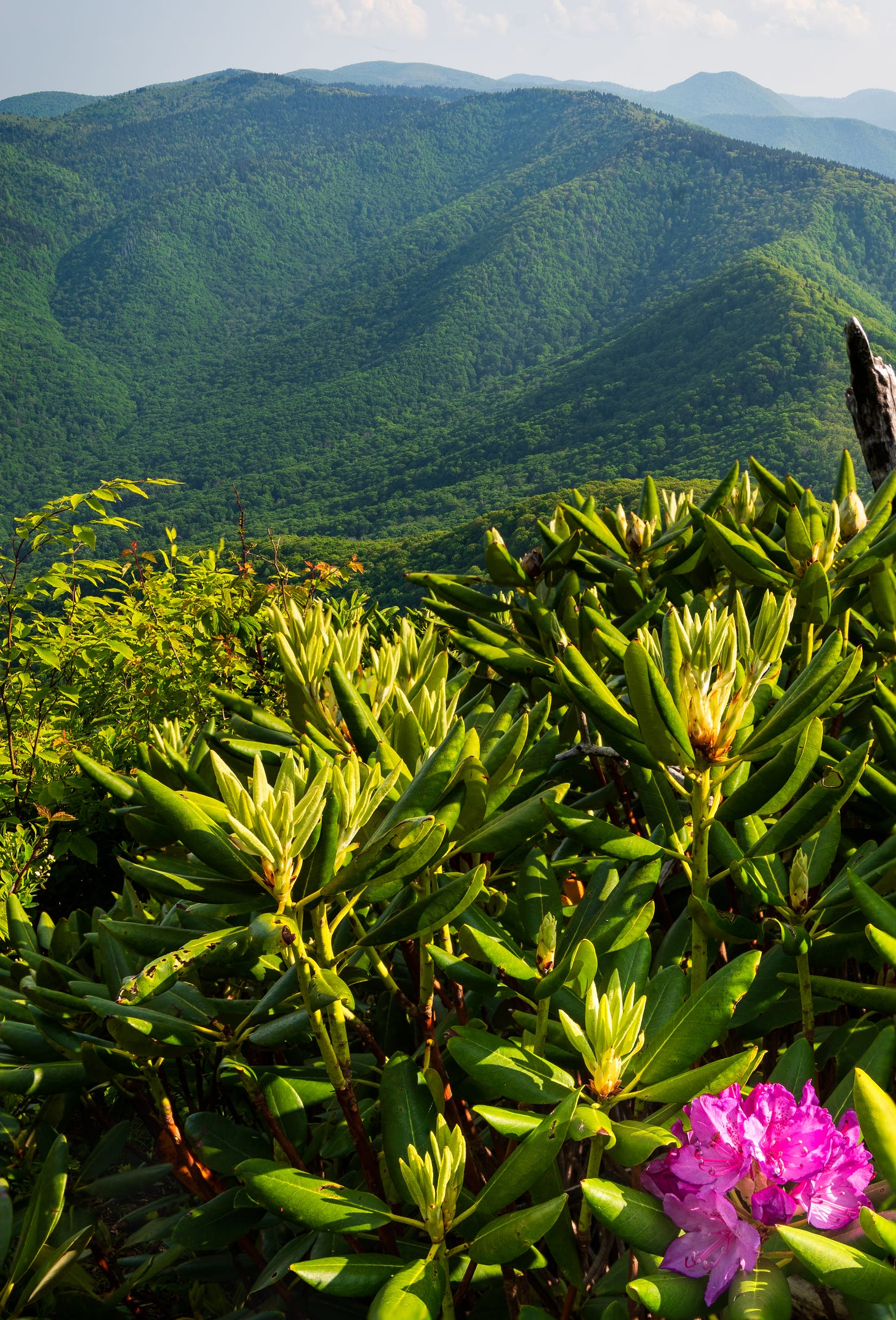
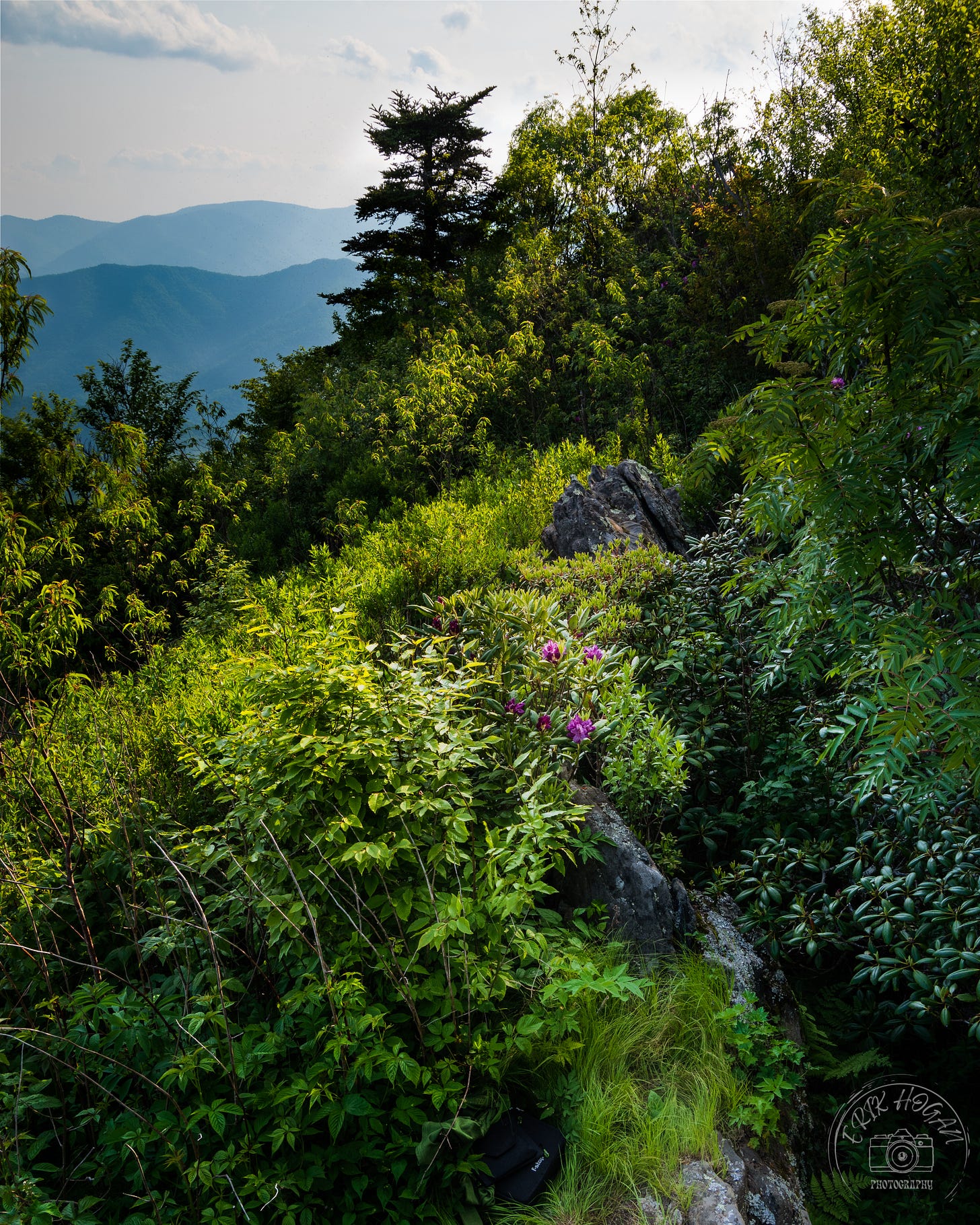
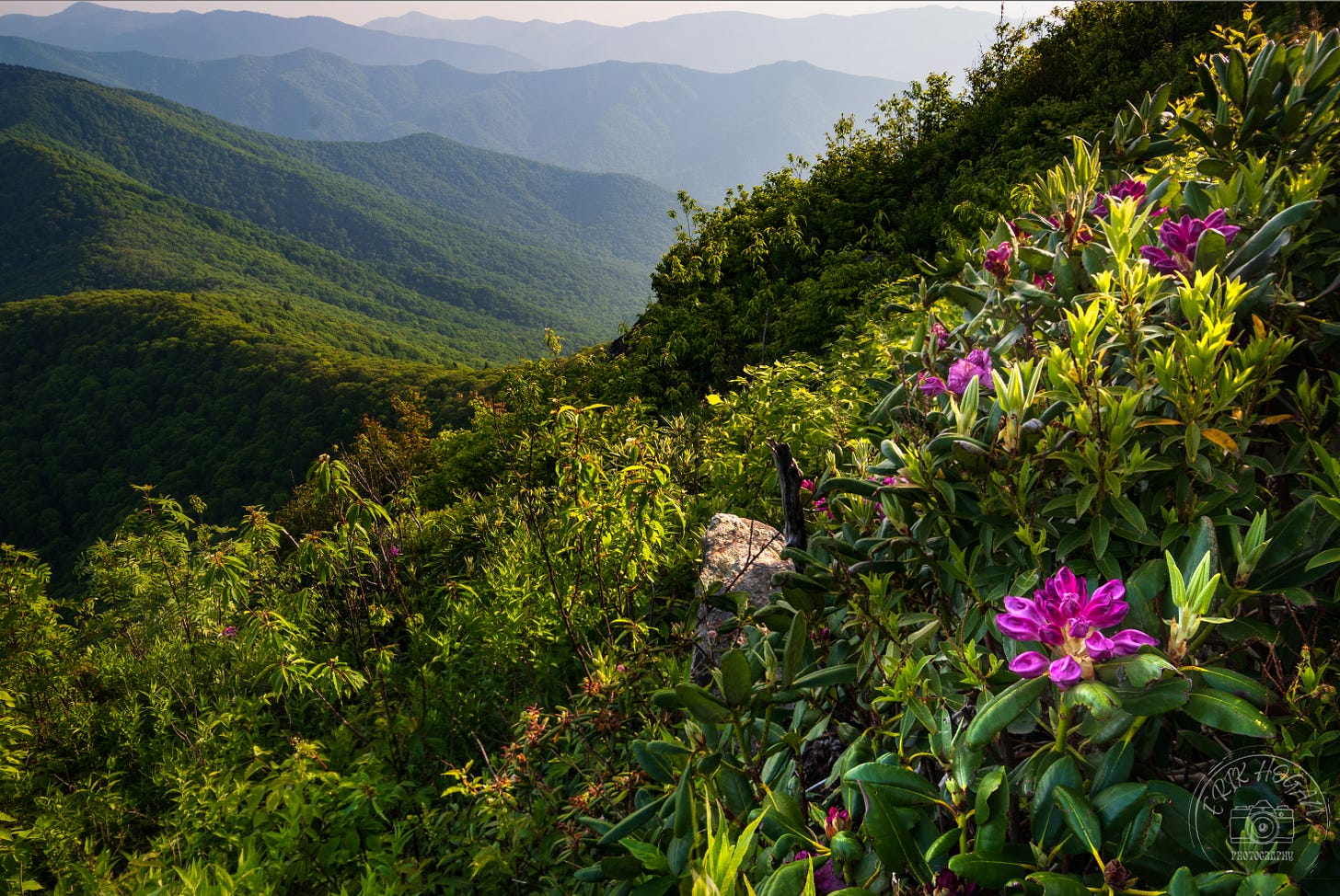

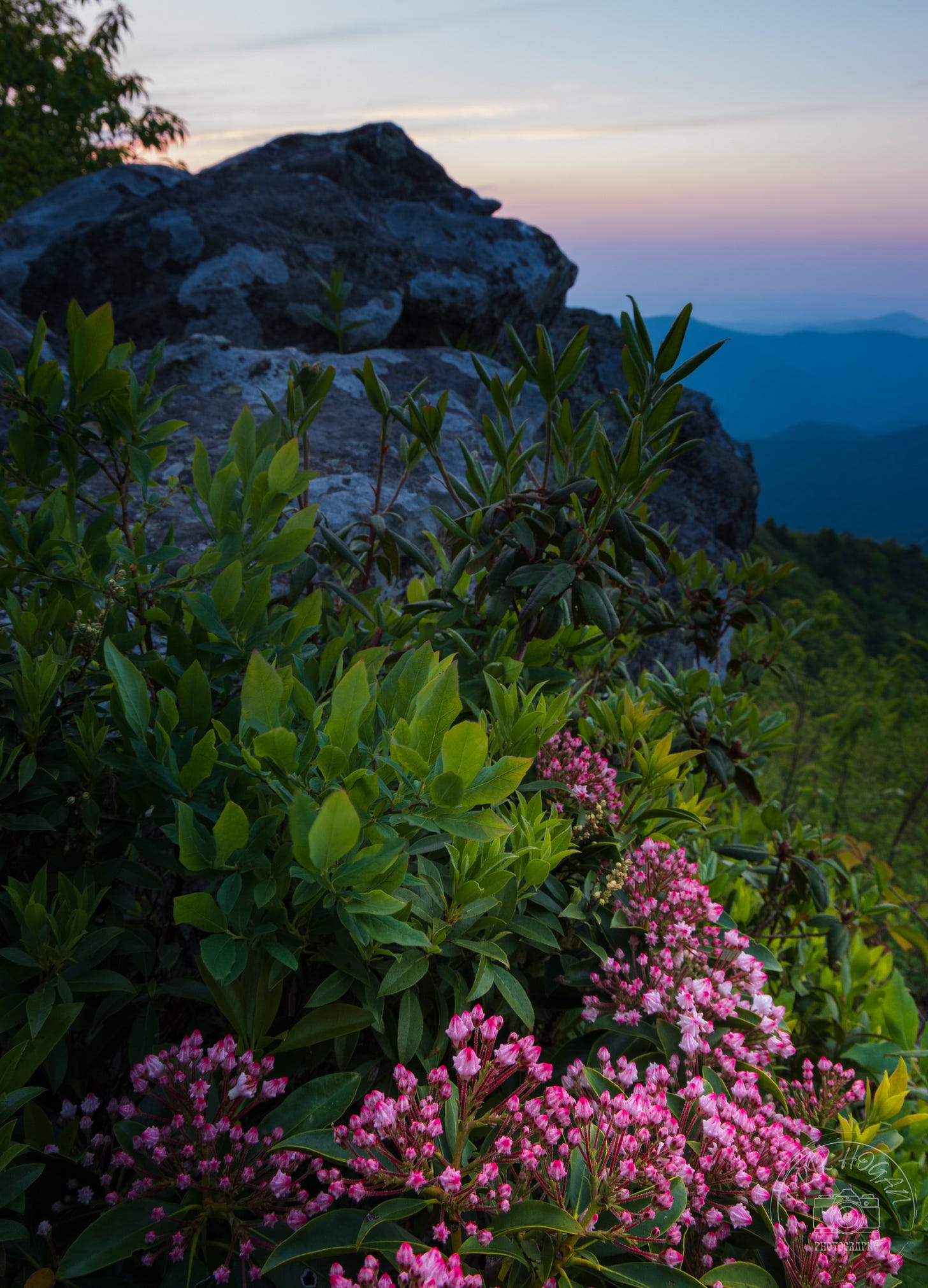
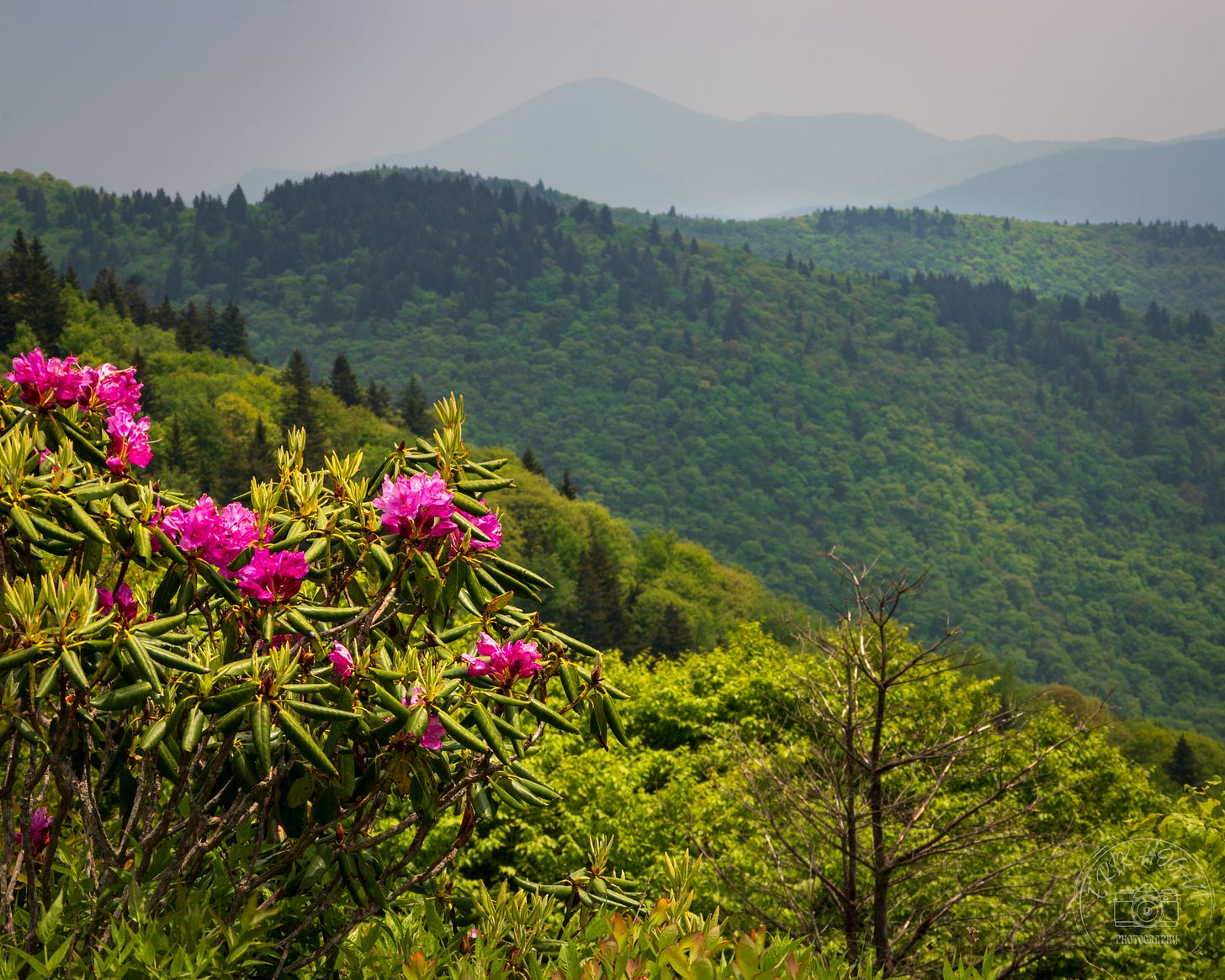
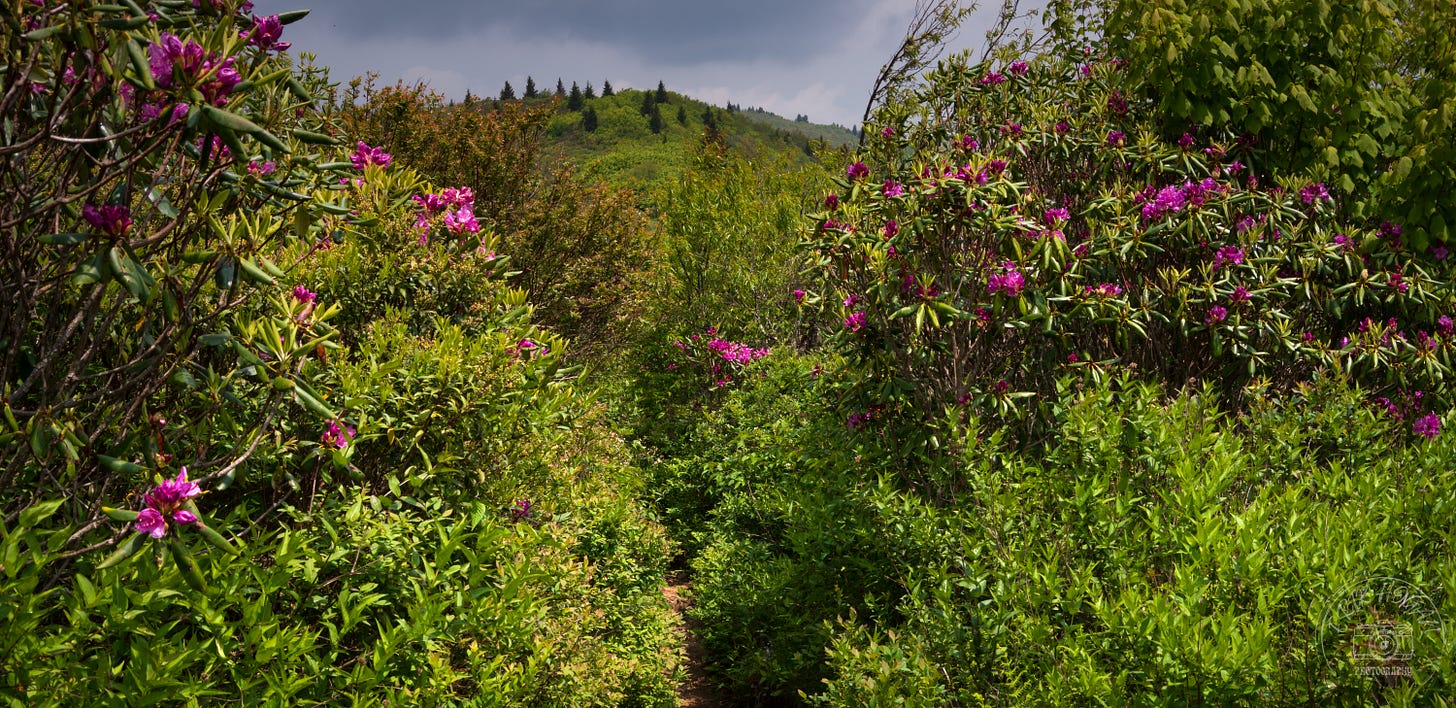

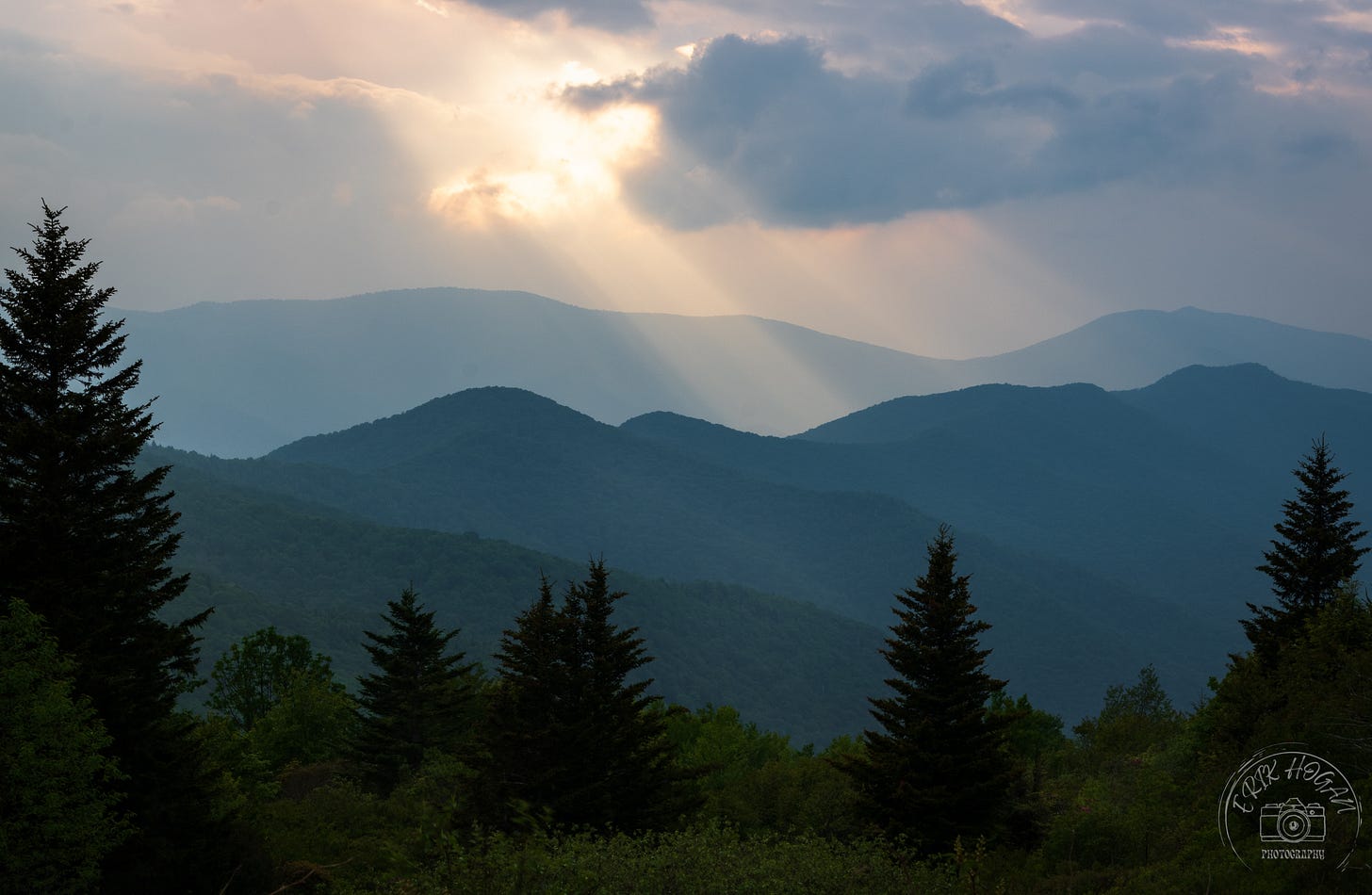
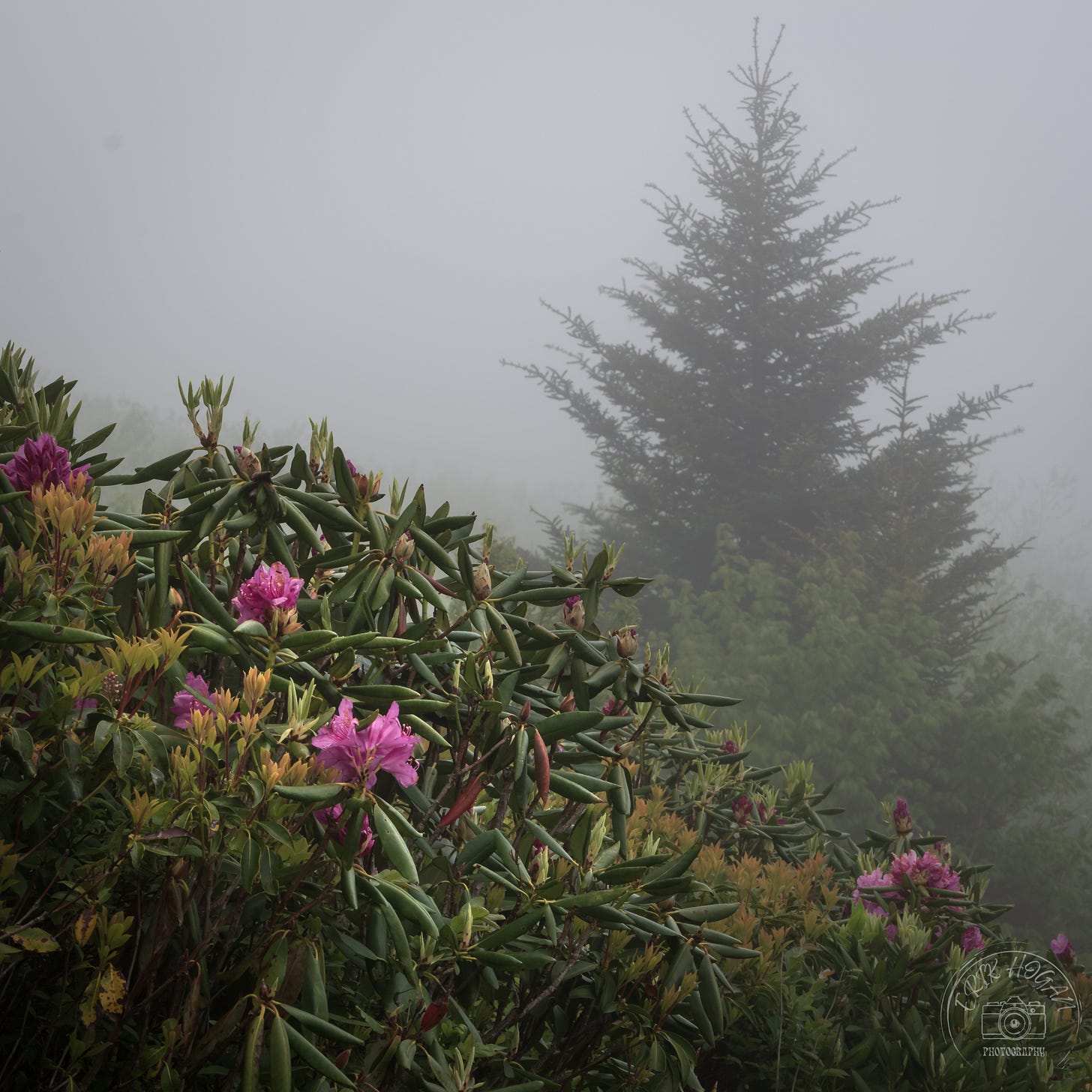

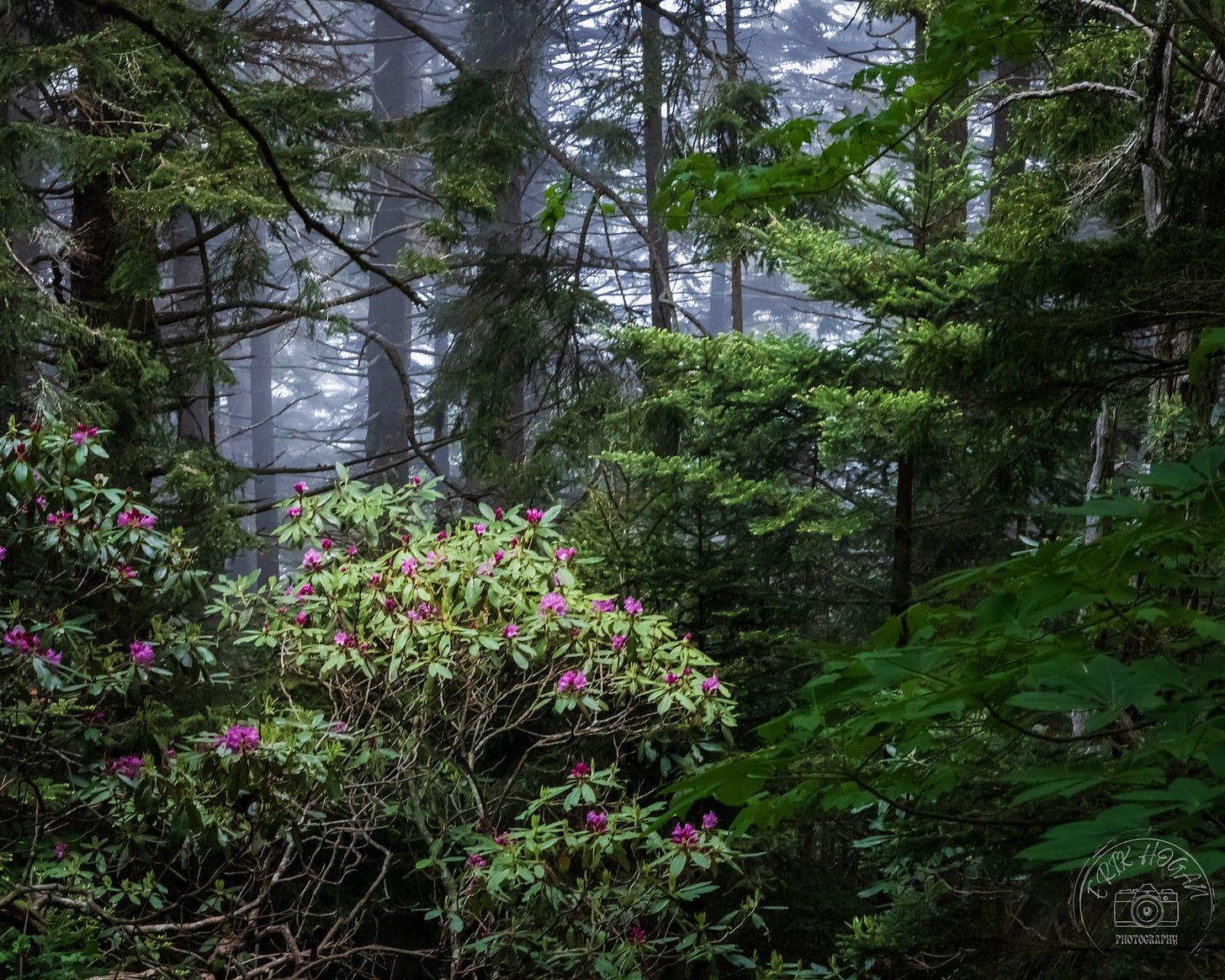


Lovely photos Erik - what amazing evening light. We have rhododendron here in the UK but it’s a non-native invasive species and causes untold ecological harm - it’s fascinating how plants fit into different landscapes and tell stories about land management of the past, to me at least!
What beautiful subjects Erik - next year! I feel your pain with the last one - just the slightest of movements - been there far too many times.